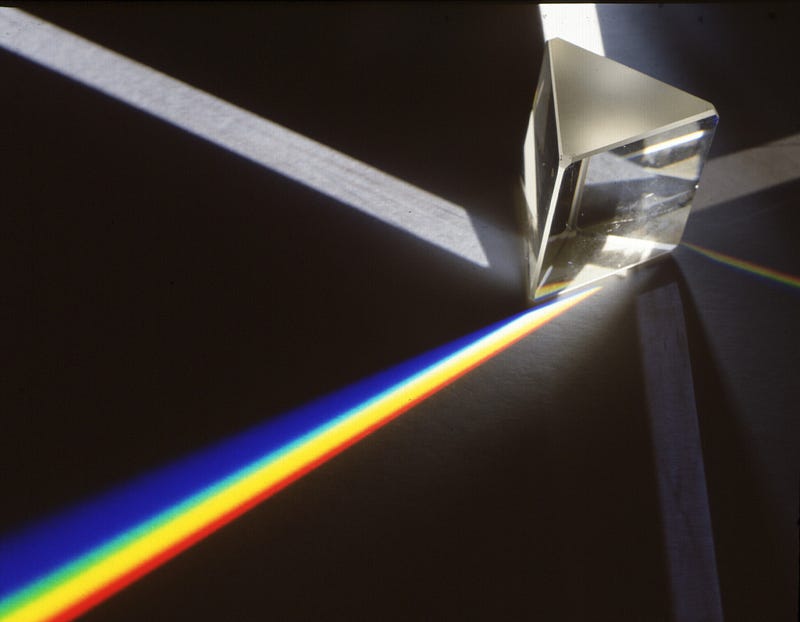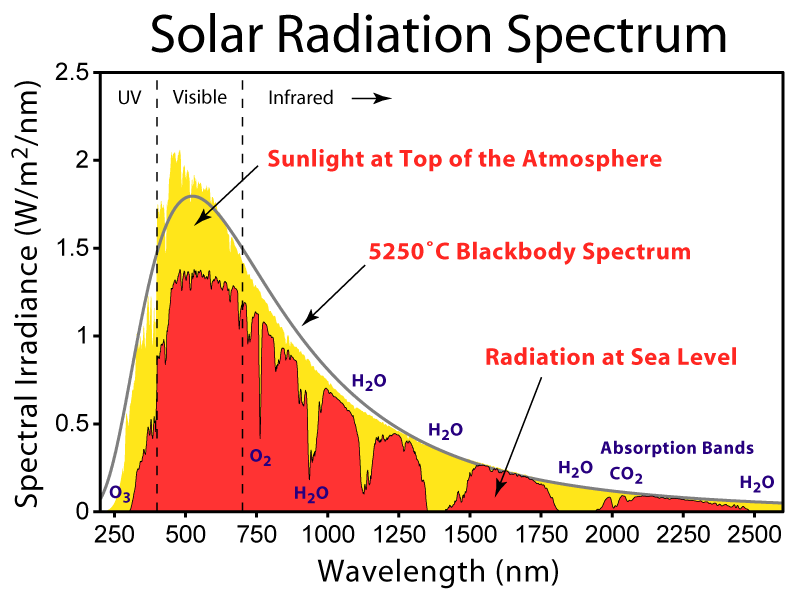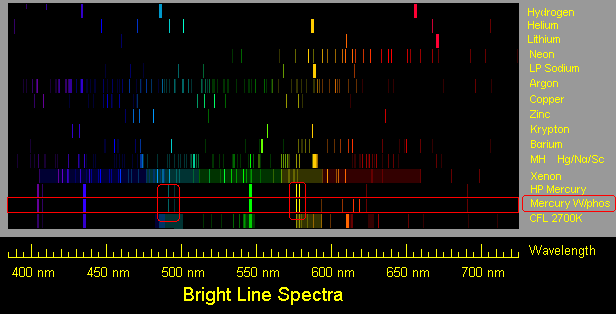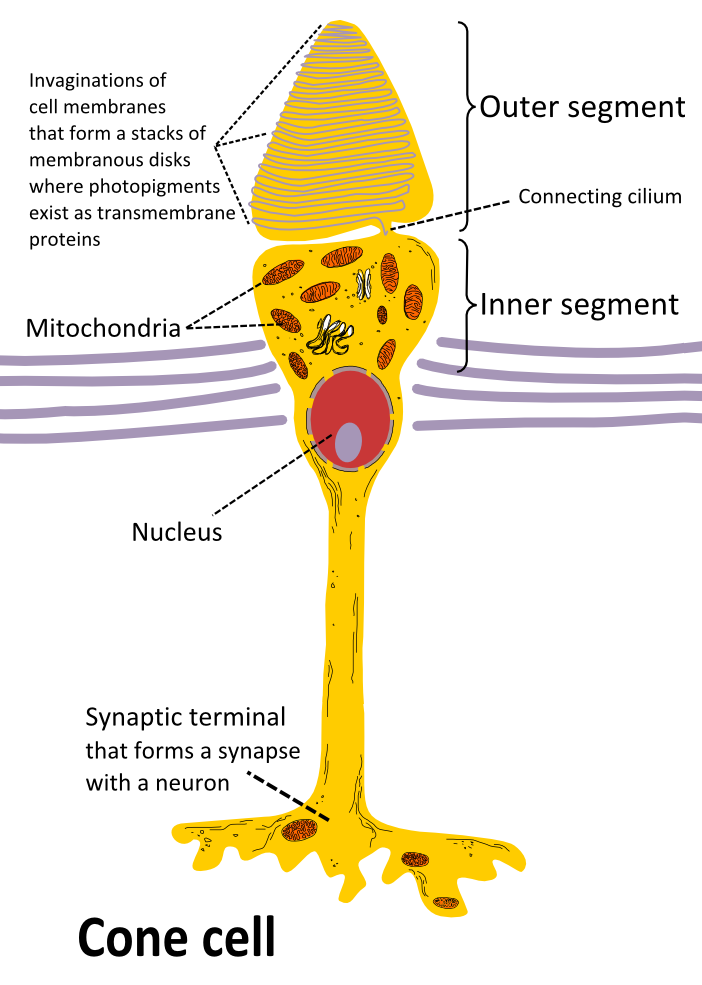How many colors are really in a rainbow?
Rather than the six or seven you may have learned, your eye is capable of delineating a tremendous number more. But just how many, and what’s the explanation?
“The colors of a rainbow so pretty in the sky.
Are also on the faces of people going by.” –Louis Armstrong
It’s no secret that white light is the light that we see when all the colors shine together and are seen at once. This has been known for over 400 years, when Isaac Newton demonstrated that white light could be broken up into all the known colors by dispersing it through a prism.

All that we’re doing is breaking white light — in this case, sunlight — up into all of its component colors. This can be done artificially (such as by configuring a prism) or naturally (in the case of a rainbow), and covers wavelengths both inside and outside what our eyes can perceive.

While the Universe contains wavelengths of light that range from many meters long (radio waves) down to ultra-energetic, high frequency gamma-rays (with wavelengths as small as a single proton), it’s only light ranging from about 400 nanometers to a little over 700 nanometers that provides us with the light visible to our human eyes.
Lucky for us, that’s where a good deal of the Sun’s light falls, especially after atmospheric absorption is taken into account.

But I was recently asked a question (that was also posted here) that I hadn’t been asked before: How many colors are there really in the rainbow?

Because that’s a little imprecise, let’s restate it in more technical terms: How many distinct frequencies can a photon have in the frequency range visible to humans?
You might think — off the top of your head — that the answer is infinity; why wouldn’t you be able to just have an infinite number of frequencies that occur in that range?

If light were a continuous, classical wave, that’s exactly how it would work. But light, remember, is an intrinsically quantum phenomenon, and so if the energy of the photons coming from a source are finite and discrete, then so must be the frequencies (and, interchangeably, the wavelengths) coming from them.
After all, this is how atoms work.

Atoms can only emit and absorb light of very specific frequencies, and hence we can observe absorption and emission lines unique to individual atoms. Not only that, but atoms can be combined in extraordinarily intricate patterns to create a myriad of molecules. Many different types of molecules with many different wavelengths of absorption/emission, to be sure, but a finite number nonetheless.
But the Sun is not made of neutral atoms.

The Sun is a miasma of incandescent plasma, and the rules that govern atoms and the specific wavelengths that they can emit and absorb light at do not apply to plasmas. Instead, they can emit at an arbitrarily large number of frequencies, dependent on the temperature of the plasma. For the Sun — at just under 6000 K — with some regions slightly hotter and others slightly cooler, it emits about 40% of its energy in the form of photons that fall in the part of the light spectrum visible to our eyes. And oh, are there a lot of them: somewhere on the order of 10^45 visible-light photons come from the Sun every second. While this number isn’t infinite, it means you’d have to go to a sub-Planckian precision to discern a frequency difference between two photons that were very close in energy.
On the other hand, your eyes are very much made up of neutral molecules that are highly restricted with respect to the wavelengths of light they can respond to, and 10^45 is a far greater number of colors than a creature like you or me will ever discern.

While the rods in your eyes cannot discern color at all, they are sensitive to as little light as a single photon, hence they are most useful under extremely low-light conditions. At night, the rods in your eyes are positioned forward, with the (useless) cones in the rear.
But under brighter conditions, the cones move forward in the eye, with each cone cell sensitive to a particular set of wavelengths of visible light, capable of discerning about 100 different shades of that color.

Since most humans have three separate types of cones (making us trichromats), a total of (100)^3 = 1 million colors are discernible to a typical human. Some humans are born without one of the three types of cones, creating a condition known as color blindness; color blind (dichromat) humans can only see (100)^2 = 10,000 distinct colors. On the other hand, some (female) humans have four distinct types of cones, making them tetrachromats and allowing them to distinguish up to (100)^4 = 100 million separate colors!

So going off of unique frequencies, there are more colors in a rainbow than there are stars in the Universe or atoms in your body, but that goes far beyond what we can perceive. Your imperfect eye can (probably) only discern about a million distinct colors when you view a rainbow, or anything else, for that matter.
But oh, what a spectacular view it is to be able to see all that our eyes permit.

What we can perceive may just be a tiny fraction of the information actually encoded in the light of the Universe, but it’s a pretty amazing tiny fraction! Dogs do a little worse, having only the yellow and blue types of cones, while sparrows have a fourth type (extending their vision into the ultraviolet), butterflies have five-to-six, and the mantis shrimp has a whopping 16!
So while a million colors (or 100 million for the tetrachromats among us) might be the limit of what the human eye can see, the mantis shrimp may be able to discern as many as 10^32 colors in the rainbow if the same pattern holds!

And that’s the amazing story of how many colors are really in a rainbow, and how it’s our biology — not the physical properties of the light itself — that limit what we can see!
An earlier version of this post originally appeared on the old Starts With A Bang blog at Scienceblogs.





